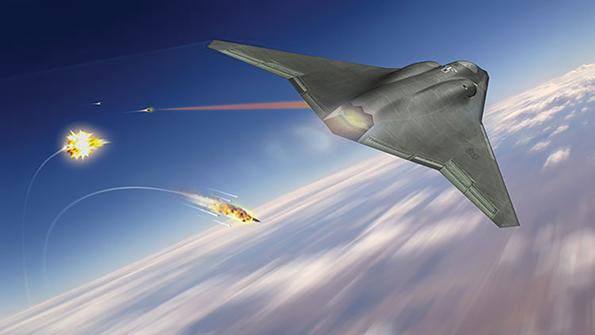
Northrop Grumman says it is ready for development work on the Navy’s F/A-XX now that it has pulled out of the Air Force’s sixth-generation program.
The battle for the U.S. Navy’s largest fighter contest in decades is slowly coming out of the dark, with the big three defense aircraft manufacturers again set to face off for the seafaring, sixth-generation F/A-XX.
The Navy on Aug. 26 confirmed that Boeing, Lockheed Martin and Northrop Grumman are competing for the aircraft, which is the Navy’s version of the Next-Generation Air Dominance (NGAD) platform, rekindling the battle that started in the earlier stages of the U.S. Air Force’s program. The same day, the Navy also disclosed it is finalizing requirements and its acquisition strategy for the uncrewed Collaborative Combat Aircraft (CCA), aligning with the Air Force and Marine Corps on standards for what is planned to be a drone fleet of thousands.
- GE and Pratt & Whitney are vying to build the engine
- Navy to compete Collaborative Combat Aircraft contract
In addition to the usual aircraft OEMs, GE Aerospace and Pratt & Whitney will compete for the engine, the Navy announced during an Aug. 26 briefing at the Tailhook Symposium in Sparks, Nevada.
The FA-XX announcement comes weeks after a change in the Air Force’s NGAD program. Northrop Grumman in June revealed it is not pursuing that program as a prime contractor but left the door open for the F/A-XX.
Tom Jones, president of Northrop’s Aeronautics Systems, tells Aviation Week in a statement that the company is pursuing F/A-XX development work and that it is “well positioned” to perform on advanced aircraft programs based on its B-21 bomber for the Air Force and E-2D Advanced Hawkeye for the Navy as well as work on the Lockheed Martin F-35 and components for the Boeing F/A-18.
“Our focus and investment in digital engineering and advanced manufacturing and legacy in designing and fielding aircraft with advanced mission systems allow us to rapidly design, execute and sustain current and future systems,” Jones says.
Boeing in a statement pointed to recent investments in the company’s infrastructure, such as a series of new advanced production facilities at its St. Louis site, to show how it is positioning itself for the future fighter programs.
“Boeing fighters are the backbone of today’s carrier air wing, and we’re using what we’ve learned to inform the multibillion-dollar strategic investment we’re making in advanced open mission systems and brand-new, all-digital factories of the future,” says Steve Nordlund, Boeing’s vice president for air dominance.
Pratt & Whitney in a statement confirmed its involvement but declined to provide specifics because of the secretive nature of the program. Neither GE nor Lockheed Martin had commented by press time.
During a panel discussion Aug. 26 at Tailhook, Cmdr. Mark Cochran, the F/A-XX requirements officer for the Navy’s Air Warfare Division N98, said the service is prioritizing operational reach and capacity for the program. This means it prefers a family of systems coupled with the CCA to counter advanced threats at long distances. The F/A-XX must use advanced weapons and data links, and planners are focusing on which of the aircraft’s apertures could allow for antennas, radar and other equipment.
In July, the White House connected the F/A-XX with a special access program in the budget called Link Plumeria, the Pentagon’s fourth-largest research and development program. The defense budget request for fiscal 2023-27 included $11.5 billion for it.
Separately, the Navy has joined the Air Force and Marine Corps in agreeing on standards for multiple components of their respective CCA programs. The services have agreed to a common baseline for CCA command and control, communications, autonomy and mission system standards in an effort to keep the programs on schedule and interoperable, says Capt. Nick Saunders, head of the N98 special programs.
The Navy has submitted a draft top-level requirements document and draft acquisition strategy to the service’s acquisition executive, Frederick Stefany, and a classified industry day is expected soon.
The Navy seeks a fighter-size air vehicle that can carry modular payloads tailored to specific missions. It will need longer range to reach beyond the crewed carrier-based fighters, and increased loiter time.
The plan is for the initial CCAs to be fielded and operated by existing fourth- and fifth-generation fighters along with command-and-control aircraft before eventually being controlled by sixth-generation F/A-XX fighters.
To achieve that, CCAs must be provided on a fast schedule and at low cost to deliver the capability to the fleet, Saunders says. “We are going to compete the Navy collaborative combat aircraft program of record,” he says.





